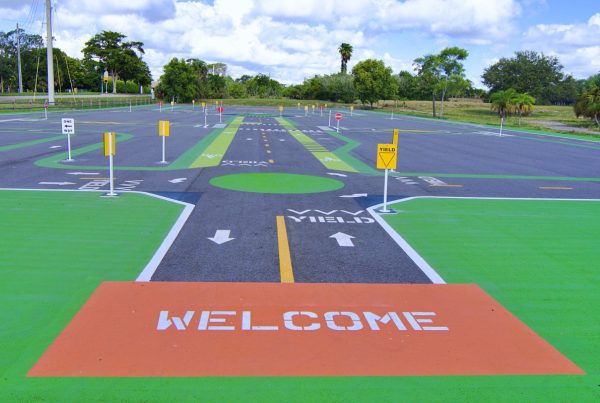Ag Reserve in peril
Palm Beach County soon may owe some property owners a refund.
Those would be the residents who in 1999 voted to tax themselves for a bond program that has been a key part of the effort to preserve farming in the Agricultural Reserve Area west of Delray Beach and Boynton Beach. Over the last 16 years, the program has been fairly successful, given the relentless pressure for development in South Florida. If two county commission votes from last week stand, however, the reserve could be doomed, despite what the public wanted in 1999.
One vote would make it easier and more lucrative for small landowners to sell development rights to their property. The other vote would allow more commercial development in the reserve, even though the area’s master plan limited such development to two locations: on the northwest corner of Lyons Road and Atlantic Avenue—that’s Delray Marketplace—and the southeast corner of Lyons and Boynton Beach Boulevard. Commissioner Paulette Burdick was the only “no” vote in each case.
Given how development has sprawled west in Broward and Miami-Dade counties, the coastal farming in the Agricultural Reserve is unique in South Florida. I remember taking my children in the late 1980s to pick strawberries west of Deerfield Beach, but those fields are long gone. Palm Beach County designated the reserve in 1980 as the first step toward keeping as much of it as possible in agriculture, even imposing a building moratorium from 1989 until 1995.
The 1999 vote for a $150 million land-buying program was a big moment, but even the bond program was not the whole plan. Preserving farmland also required creation of a master plan and limits on development.
At last Thursday’s meeting, County Mayor Shelley Vana—who cut off Burdick at one point—tried to justify allowing more development by saying that the rule changes would not affect land purchased with the bond issue—land the county leases to farmers—and thus would not go against the will of the voters. Vana is correct that such land would remain undeveloped, but she misses the larger point.
Farms and subdivisions don’t make for good neighbors. Some homeowners complain about noise from farm vehicles, forgetting that the farms were there first. They complain about long drives for services, perhaps unaware of the rules restricting those services. In turn, some farmers complain that trucks have a hard time getting through those subdivisions to their fields.
So every small concession the county commission makes to those who want more building in the Agricultural Reserve— every deviation from the master plan—undercuts the larger goal. The commission has allowed a hospital in the reserve. The commission has allowed a school, after pressure from parents who said the developer had promised them one in the neighborhood. The commission has eased rules for certain development projects. Lisa Interlandi, a lawyer with the Everglades Law Center who spoke against the changes, said in an interview, “It’s been death by a thousand cuts in the reserve.”
The latest two changes, though, could be major stab wounds. For more than year, owners with less than 150 acres—many of them in the nursery business, many with holdings of far less than 150 acres—have complained that they are being treated unfairly and demanded changes. They have formed a political action committee called Forced to Farm, and they wear T-shirts bearing that name to commission meetings.
These landowners say they can’t make money in the nursery business. They could sell their development rights or sell their property outright for development, but not for as much as they would like. That’s because for every 40 acres of homes a developer must preserve 60 acres. Also, any property less than 150 acres must be next to other preserved land—contiguous—to reach the total of 150 acres. Those rules make it harder for developers to assembled the large tracts they most desire, and the rules make small parcels less appealing.
The first proposed change would end that contiguity requirement. It would mean more homes in the reserve, and thus more pressure on farmers who work larger tracts, make money and provide jobs.
Understand that the county doesn’t have to make either of these changes. The aggrieved landowners don’t have solid grounds for a lawsuit. They can get money for their land. Interlandi has the right response when she said of the Agricultural Reserve preservation plan, “No one was guaranteed a retirement out of this.”
Some of these landowners could have sold their land through the bond program and leased it back. They didn’t. Because of term limits, no current commissioner was in office when the reserve plan was crafted. In June, the same change that would allow more development went to the Palm Beach County Planning Commission. By a vote of 12-0, the commission—an advisory board—disapproved.
Fewer than 100 landowners are demanding these changes. Nearly 66,000 voters demanded in 1999 that the county limit development in the Agricultural Reserve Area. The commission will take second votes on the changes in October. Perhaps by then the commission will realize that doing nothing is the right option.
Tax news
Like Delray Beach, Boca Raton will cut its overall tax rate by a microscopic amount, yet most property owners will pay more overall because of rising values.
Next week, the city council will adopt an operating/debt service tax rate of about $3.42 for every $1,000 of assessed value. The owner of a homestead—primary residence—assessed at $400,000 would pay $1,368. The overall budget will increase.
For overall bills to stay the same as property values increase, the city would have to set a tax rate of $3.22. That’s known as the rollback rate. To achieve a true tax cut, the rate would have to be even lower.
Lawsuits
Two members of Delray Beach’s legal staff more than earned their salary last week.
The city was the defendant in a lawsuit brought by a woman whose car was struck from behind in 2013 by a 35,000-pound city vehicle used to clean sewers. According to City Attorney Noel Pfeffer, the plaintiff wanted $750,000 in compensation. The jury, Pfeffer said, found the city liable but awarded only $17,000.
Assistant city attorneys Michael Dutko and Janice Ruskin argued the case for Delray Beach. They claimed that the plaintiffs’ injuries did not stem from the crash, and that the plaintiff cut off the driver of the city vehicle, thus leading to the crash.
Drought status
If you think that we got some relief from the drought last month, you’re right. But only some relief.
According to the South Florida Water Management District, Palm Beach County got 5.5 inches of rain in July, or about 84 percent of the wet-season normal. May and June had been so unseasonably dry that the district declared some portions of the county to be in severe drought. Throughout the district’s 16 counties, rainfall remains about 15 percent below normal.
Districts to be redrawn
On Wednesday, the Florida Senate posted a base map for the state’s 27 congressional districts. The Legislature begins a special session Monday to redraw the districts after the Florida Supreme Court found that eight of them violated state constitutional requirements against gerrymandering.
As I had expected, the new map greatly changes the districts of area Democrats Ted Deutch and Lois Frankel. Deutch’s District 21, nearly 40 percent of which is now in Broward County, would be all in Palm Beach County. Frankel’s District 22 would basically become a Broward-based seat, with just 17.6 percent in Palm Beach. Frankel no longer would live in the district. She would live in Deutch’s district, and might have to run against him. More about this next week.
About the Author
Randy Schultz was born in Hartford, Conn., and graduated from the University of Tennessee in 1974. He has lived in South Florida since then, and in Boca Raton since 1985. Schultz spent nearly 40 years in daily journalism at the Miami Herald and Palm Beach Post, most recently as editorial page editor at the Post. His wife, Shelley, is director of The Learning Network at Pine Crest School. His son, an attorney, and daughter-in-law and three grandchildren also live in Boca Raton. His daughter is a veterinarian who lives in Baltimore.








